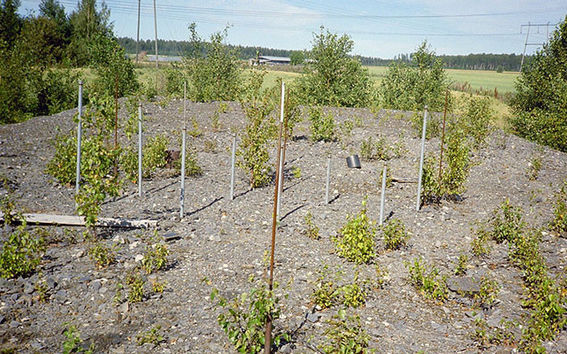New model helps in the design of base structures

Mirva Koskinen, M.Sc. (Tech.) examined a material model in her doctoral dissertation by which it is possible to predict deformations caused by construction in soft clay soil.
The general population is seeking to reside more and more in population centres along the coast. Building in these areas is challenging from place to place, since soft clay layers are generally found in the soil.
‘The ground is generally raised in connection with construction, which leads to the emergence of depressions and displacements in the clay layers. For this reason, tools are required for the design of the base structures by which deformations can be predicted,’ Ms Koskinen says.
Deformations are primarily seen as depressions in roads, streets and yards. Repairing such faults results in expenses, and more problems ensue if there are ground-based pipelines in the depressed areas.
According to Ms Koskinen, blocks of flats are safe from depressions, as the foundations of buildings in soft terrain areas are always piled.
Simple to use
The better designers are capable of predicting deformations, the better they are able to select and dimension the ground structures correctly: durably but not unnecessarily heavily and expensively.
In her dissertation, Ms Koskinen further developed the material model previously created at Aalto University and the University of Glasgow to the extent that the new model takes the orientation of the clay structure into account as well as the effect of bonds between the clay particles on deformation.
According to Ms Koskinen, the model is relatively simple to use and can already be applied in practice. The model has no commercial program of its own, but it is possible to implement it in some particular programs.
Time is not taken into account in the model. This theme is currently being investigated in another Aalto University dissertation.
The model will next be applied in the modelling of a test structure in Helsinki’s Östersundom subdistrict. By means of the test structure, information about the preliminary construction of the area is being acquired for design purposes.
Many types of clay
In her dissertation, Ms Koskinen examined four typical clays in the coastal regions located in in Espoo’s Otaniemi, in Espoo’s Vanttila, alongside the Porvoo-Koskenkylä motorway, and in Murto near Seinäjoki.
The clays of the coastal regions have formed during the various development stages of the Baltic Sea, when soil elements descended to the bottom of the sea and lakes, forming layers.
The clays may significantly deviate in their particular qualities from each other. Sensitive clays adopt a porridge-like consistency when mixed. Less sensitive clays retain their solidity better when mixed.
Mirva Koskinen, M.Sc. (Tech.) defended her dissertation on 12 December 2014 at 12.00 noon. The name of the dissertation is Plastic anisotropy and destructuration of soft Finnish clays.
The URL for the dissertation is: http://urn.fi/URN:ISBN:978-952-60-5929-7
Contact information:
D.Sc. Mirva Koskinen, tel. +358 (0)50 3217032, [email protected]
- Published:
- Updated:
Read more news

Get to know us: Associate Professor Maria Sammalkorpi
Sammalkorpi received her doctorate from Helsinki University of Technology 2004. After her defence, she has worked as a researcher at the Universities of Princeton, Yale and Aalto.
Aalto computer scientists in ICML 2024
Computer scientists in ICML 2024
Getting bacteria into line
Physicists use magnetic fields to manipulate bacterial behaviour